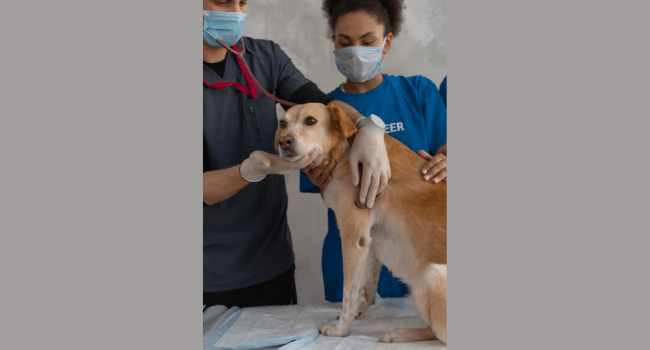Table of Contents
Ensuring the utmost cleanliness in an animal hospital is crucial for promoting the well-being of both the animals in your care and the staff members working within the facility. It goes beyond safeguarding the health and safety of your patients; it also cultivates an atmosphere of professionalism and reliability. The primary objective of this all-encompassing guide is to offer you valuable knowledge and actionable advice on how to maintain cleanliness and hygiene in your animal hospital. By adhering to the suggestions provided within this guide, you can establish an environment that is secure, inviting, and reassuring to both animals and their owners.
Creating a Clean Environment
Creating and upholding a clean environment within your animal hospital requires careful attention to various factors. It is important to carefully consider the design and layout, ensuring proper zoning of different areas like exam rooms, surgical suites, and recovery areas. The implementation of zoning measures helps uphold hygiene standards and mitigates the potential for cross-contamination. Additionally, the choice of flooring and wall materials plays a crucial role, as they should be easy to clean and disinfect effectively. Adequate ventilation and lighting are vital components that contribute to the creation of a clean and comfortable environment, benefiting both the animals and staff members. To ensure a consistently clean environment, it is essential to establish regular cleaning protocols, including defined schedules and routines, and to select effective cleaning agents. These measures help maintain cleanliness throughout the hospital. Furthermore, proper waste management, encompassing the appropriate disposal of medical waste and the implementation of recycling efforts, is of utmost importance for both environmental sustainability and overall cleanliness.
Maintaining Hygiene Practices
Ensuring personal hygiene is of utmost importance for staff employed in an animal hospital. It is imperative for staff members to don appropriate protective clothing, including gloves and gowns, to prevent any potential contamination. Maintenance of cleanliness heavily relies on sterilization and infection control measures. Thoroughly cleaning and sterilizing surgical equipment after each procedure, implementing strategies to prevent cross-contamination, and establishing protocols for isolating contagious animals are indispensable actions for maintaining a hygienic environment. Furthermore, the safe handling of hazardous substances, such as cleaning chemicals, necessitates proper storage, clear labeling, and comprehensive staff training.
Animal Care Areas
Special emphasis is required to uphold cleanliness in animal care areas, encompassing exam rooms, surgical suites, and recovery areas. It is imperative to establish and adhere to regular cleaning and disinfection protocols, particularly between patients, in order to mitigate the potential for infections. Ensuring sanitized equipment is meticulously maintained is essential to safeguard the well-being of both animals and staff members. Strict adherence to correct sterilization procedures in surgical suites is of paramount importance in order to effectively mitigate the risk of post-operative infections and complications. Additionally, close monitoring and sustained cleanliness in recovery areas is crucial to facilitate the healing process and minimize the risk of secondary infections.
Reception and Waiting Areas
The reception and waiting areas are the initial point of interaction for clients and their animals. It is crucial to regularly clean and sanitize these spaces to make a positive impression and maintain a hygienic environment. To minimize the transmission of germs, it is important to frequently disinfect high-touch surfaces, offer hand sanitizers to clients, and follow appropriate waste management practices. Emphasizing comfort and cleanliness is of utmost importance to ensure a pleasant experience for both clients and their animals.
Laundry and Linen Management
Ensuring the correct handling and cleaning of linens within an animal hospital is of utmost importance in maintaining a clean environment and minimizing the risk of infection transmission. It is crucial to establish protocols for handling soiled linens, including implementing appropriate containment and transportation methods. Preventing cross-contamination during laundry processes is of utmost importance, and it is necessary to utilize suitable detergents and sanitizing agents to effectively eliminate germs. Regular maintenance of laundry equipment, such as washing machines and dryers, is vital to guarantee their proper functionality and to proactively prevent any potential hygiene concerns.
Staff Training and Education
It is crucial to provide comprehensive and ongoing training to both new and existing staff members. These training programs cover various aspects of cleanliness protocols, such as effective disinfection procedures, proper waste management practices, and stringent infection control measures, including the handling and disposal of surgical waste. Fostering a culture of cleanliness and accountability is essential within the animal hospital. Through regular educational sessions and workshops, staff members stay updated on the latest advancements in cleanliness practices, ensuring their expertise remains current. By investing in staff training and education, the animal hospital guarantees that all team members possess the requisite knowledge for surgical waste management and expertise to uphold a consistently clean and safe environment for both animals and staff.
Monitoring and Quality Control
Regular inspections and audits are necessary to evaluate the cleanliness of the facility and detect areas that need enhancement. These inspections offer an opportunity to thoroughly assess every aspect of the hospital, including animal care areas, reception, and waiting areas, to ensure adherence to proper cleaning protocols. It is essential to promptly address any identified issues and take corrective actions to uphold a superior level of cleanliness. Furthermore, gathering feedback from both clients and staff can provide valuable perspectives and aid in identifying areas for improvement. Through ongoing monitoring and the implementation of robust quality control measures, the animal hospital can consistently deliver a hygienic and secure environment for animals, staff, and visitors.
Conclusion
Maintaining the highest level of cleanliness in your animal hospital is crucial for the health and well-being of your patients. Adhering to the guidelines in this comprehensive guide helps establish a hygienic environment that prioritizes animal well-being and safety. From designing a clean facility to upholding proper hygiene practices in all areas, each aspect plays a significant role in maintaining overall cleanliness.
Read more on KulFiy
